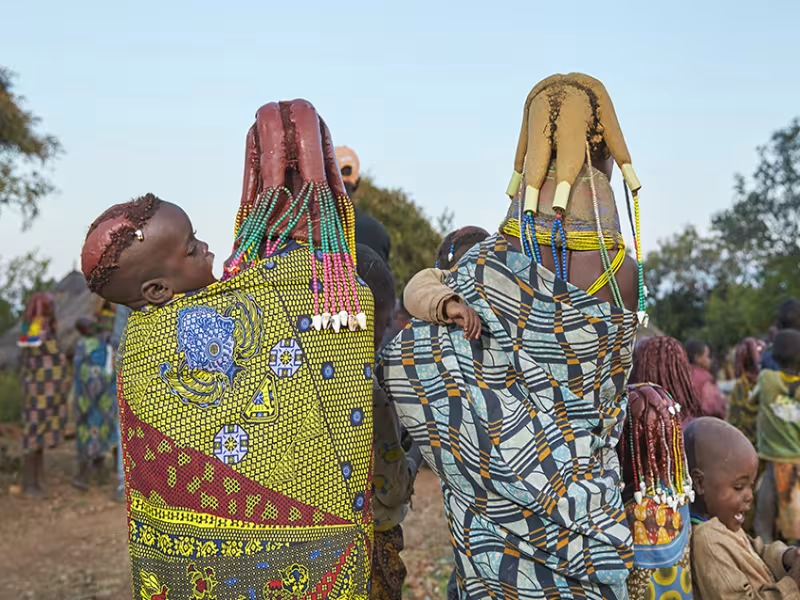
SHERIDAN, WYOMING – August 5, 2025 – Beyond sandy beaches or safari trails, Angola offers something far rarer: a direct connection to some of humanity’s oldest living cultures. Here, in the heart of southern Africa, travelers aren’t just sightseeing — they’re time-traveling through stories, traditions, and ways of life that have remained rooted in identity for centuries.
Whether it’s hairstyles that speak louder than words, languages marked by melodic clicks, or rituals steeped in spiritual meaning, Angola’s people offer an unparalleled immersion into the roots of human heritage. It’s not just travel — it’s transformation.
The Mwila: When Hair Becomes Heritage
In Angola’s remote Huíla and Namibe provinces, the Mwila women turn their appearance into poetry. Their elaborate hairstyles, made from a blend of ochre clay, butter, herbs, beads, and shells, aren’t just beautiful — they’re biographical.
Each design tells a story:
- Age and marital status
- Social roles within the community
- Ritual moments like coming of age or marriage
The Mwila’s aesthetic culture isn’t just for show — it’s their social language. Like a living archive, their bodies carry generations of meaning, wrapped in fabric, painted skin, and timeless symbolism. If you've ever wondered what self-expression looked like before smartphones and selfies, this is it.
The Himba: Beauty Rooted in Earth and Spirit
Cross into Angola’s borderlands with Namibia, and you’ll find the Himba people — striking in both appearance and philosophy. Their signature red skin tone comes from otjize, a richly symbolic paste of ochre and butterfat that shields them from the elements and honors their ancestors.
Like the Mwila, the Himba women wear:
- Hair styles that reflect life stages
- Iron and shell jewelry tied to social status
- Cultural pride that defies modern dilution
Despite growing exposure to outside influence, many Himba communities continue to live by traditional values, farming livestock and sharing oral histories under the stars. It’s not a museum — it’s a living, breathing archive of African heritage.
The San: The First Storytellers of the South
In Angola’s deep south, the San people — often referred to as the original inhabitants of southern Africa — live lightly, but profoundly. As hunter-gatherers, they move with the seasons, sustaining themselves with millennia-old knowledge of flora, fauna, and survival.
What sets the San apart?
- Their languages use click consonants, thought to be among the oldest still spoken
- They maintain deep respect for nature, practicing sustainable living in ways the modern world is only now rediscovering
- Community is built on balance, generosity, and wisdom — not wealth
In today’s age of climate anxiety and culture loss, the San offer a model of harmony we’d do well to learn from.
Why This Journey Matters
This isn’t your average “off the beaten path” vacation. Angola offers a rare portal into the unfiltered beauty of cultural resilience. These aren’t performances for tourists — they’re lived realities, proud and persevering.
For conscious travelers, culture seekers, and anyone curious about the human story, Angola is:
- A living classroom of pre-colonial African heritage
- A reminder that tradition and modernity can coexist
- A chance to support communities through respectful, meaningful tourism
Unlike many destinations where indigenous culture is often packaged for mass tourism, Angola’s approach feels refreshingly authentic. There are no “theme park” villages or watered-down ceremonies. Here’s how Angola stands apart:Plan Your Visit
Whether you're interested in heritage photography, anthropological insight, or just want to be moved by something real, Angola delivers. With its new tourism slogan, “Visit Angola – The Rhythm of Life,” the country invites the world not to just come and see — but to come and feel.
Learn more about cultural experiences, itineraries, and how to visit responsibly at www.klebergroup.com.